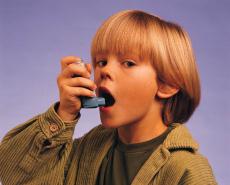Home energy retrofits reducing healthcare costs


Wegowise, a start-up that identifies energy efficient homes by analyzing utility data, has partnered with a national non-profit to upgrade low-income housing around Baltimore, Maryland. A recent pilot project produced an unforeseen result: emergency room visits among residents who were helped fell by 67 percent.
The Environmental Protection Agency says that buildings in the U.S. waste an average of 20 percent of the US$400 billion plus that's spent on energy annually, but not every building owner has the same resources to eliminate waste. Homes that aren't sufficiently weatherized can be hazardous to health. WegoWise and Green & Healthy Homes Initiative (GHHI), a national non-profit, are partnering to help economically disadvantaged families fix weatherization issues that negatively impact their household budgets and lives.
WegoWise provides a Web application to track and analyze utility data. Building owners would use its application to identify their most wasteful properties and greatest potential savings with upgrades. The entire process is automated by the application, which is available to anyone in the U.S. as a monthly subscription. WegoWise saved the GHHI from having to scour through spreadsheets to target homes that were in the greatest need of health and energy upgrades. 31 homes were selected for repairs.
"WegoWise has significantly enhanced our ability to accurately track the cost-effectiveness of the services we provide to the families we serve," said Ruth Ann Norton, executive director of GHHI. "Energy efficiency contributes to vital economic and health benefits for children and families living in low-income communities. By enabling us to target energy retrofits and verify subsequent savings, WegoWise provides important data that allows us to continue to refine the services that offer the most value for our clients and our partners."
The upgrades yielded an average annual energy savings of US$400/year in utility bills for low-income families. GHHI weatherized homes, fixed leaky roofs, and replaced aging appliances. The weatherization mitigates environmental elements that can negatively impact a child with respiratory illnesses, so cases of acute asthma fell dramatically. That saved a great deal of money in health costs.
Aetna says that the average cost of an ER visit for asthma can exceed $6,000. Therefore, the 67% reduction in hospitalization has already saved taxpayers (assuming some of the residents were enrolled in Medicaid) and residents approximately $53,000. Who would have thought that weatherproofing a home was a way to both reduce health care spending and improve public health?
It's well established that home energy retrofits are the low hanging fruit in reducing carbon emissions, but could a budget for energy retrofits today also reduce long term government spending by addressing chronic illnesses?
(image credit: NIH.gov)
Related on SmartPlanet:
This post was originally published on Smartplanet.com